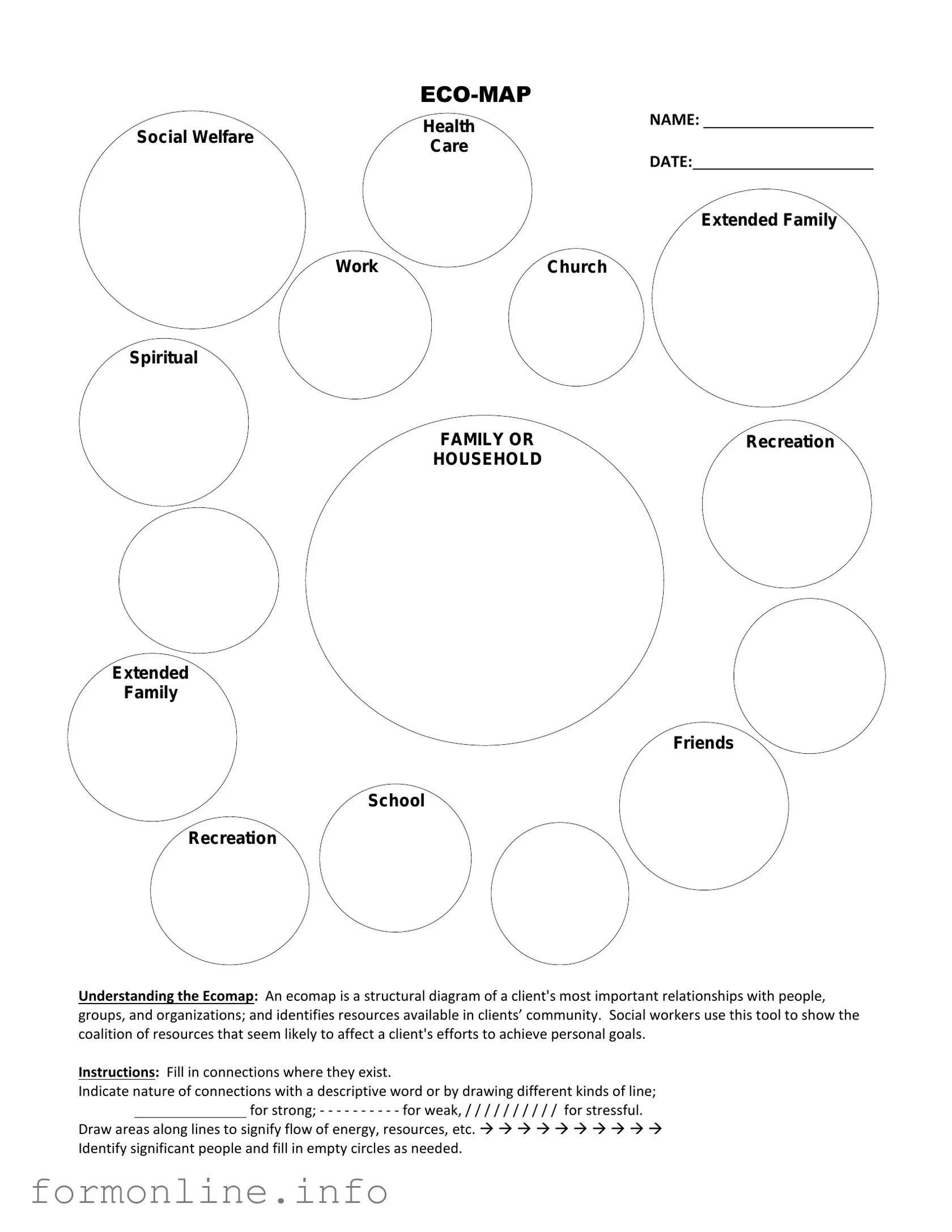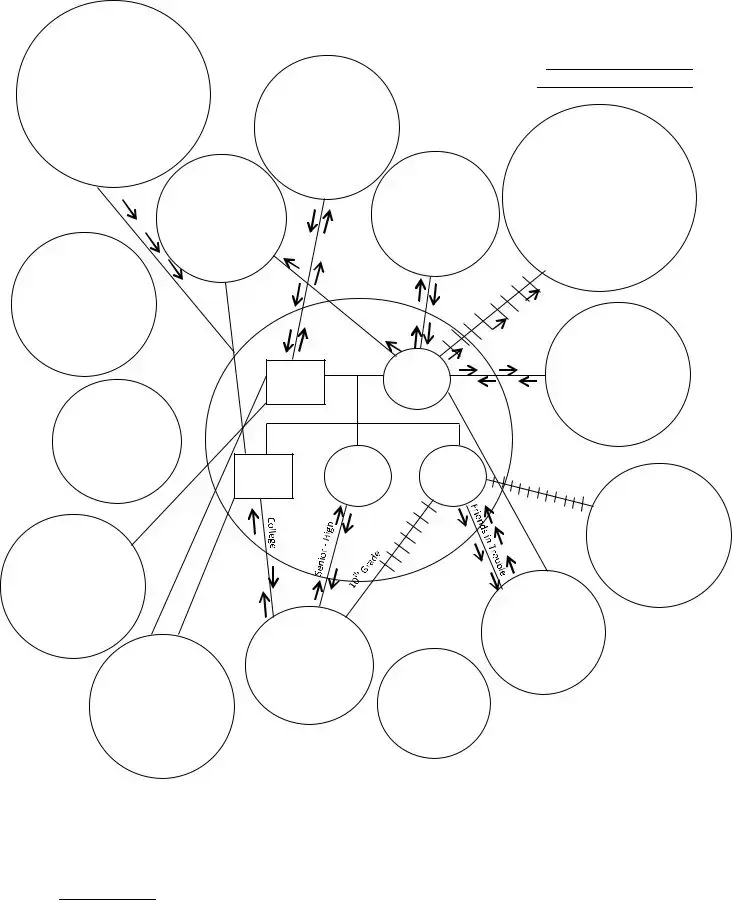The Eco Map form is similar to the Family Genogram, which visually represents family relationships and dynamics. Like the Eco Map, the Genogram provides a snapshot of interactions, but it focuses specifically on familial connections. It allows individuals to see patterns of behavior and communication within the family unit, making it easier to identify strengths and areas for improvement. Both tools serve to enhance understanding of social systems, yet the Genogram emphasizes lineage and ancestry, while the Eco Map highlights environmental influences.
Another document akin to the Eco Map is the Social Network Map. This tool illustrates an individual’s social connections and support systems. Similar to the Eco Map, the Social Network Map helps users visualize relationships and resources available to them. It captures the breadth of social interactions, including friends, colleagues, and community members. While the Eco Map focuses on broader ecological factors, the Social Network Map zooms in on personal connections, providing insights into social support and potential avenues for assistance.
The Life Map is another document that parallels the Eco Map. It provides a chronological visual representation of significant life events and transitions. While the Eco Map captures current relationships and environmental factors, the Life Map focuses on the timeline of experiences that shape an individual’s life. Both tools encourage reflection and self-awareness, allowing users to identify patterns and influences that have impacted their development over time.
Similar to the Eco Map is the SWOT Analysis, which assesses strengths, weaknesses, opportunities, and threats in various contexts. The SWOT Analysis helps individuals and organizations evaluate their position within a specific environment. Like the Eco Map, it encourages critical thinking about external factors that can affect outcomes. However, the SWOT Analysis is more structured and analytical, while the Eco Map offers a more relational perspective, emphasizing connections and interactions.
The Behavioral Assessment is another document that shares common ground with the Eco Map. It evaluates an individual’s behaviors and interactions within their environment. While the Eco Map focuses on relationships and ecological factors, the Behavioral Assessment dives deeper into specific actions and reactions. Both documents serve to enhance understanding of how individuals engage with their surroundings, but they do so from different angles, with the Behavioral Assessment emphasizing individual behavior over relational dynamics.
The Needs Assessment is also similar to the Eco Map in that it identifies gaps and needs within a community or individual’s life. Both documents aim to gather information that can inform interventions and support strategies. The Needs Assessment typically focuses on specific areas of concern, such as health, education, or social services, while the Eco Map provides a broader view of relationships and environmental influences. Together, they can offer a comprehensive understanding of challenges and resources available.
Another important document to consider is the essential Power of Attorney for a Child form, which allows parents to designate a trusted individual to make decisions for their children when they are unable to do so themselves. This legal form ensures that caregivers have the authority to act in the child's best interests during temporary absences. For more information, you can view the essential Power of Attorney for a Child resource.
Lastly, the Personal Development Plan (PDP) can be compared to the Eco Map. The PDP outlines an individual’s goals and the steps necessary to achieve them. Like the Eco Map, it encourages reflection on personal circumstances and external influences that may impact growth. The PDP is more focused on individual aspirations and actionable steps, whereas the Eco Map provides a broader context of relationships and environmental factors that support or hinder personal development.


